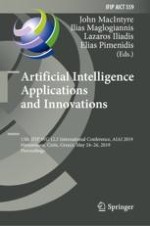2019 | OriginalPaper | Buchkapitel
FISUL: A Framework for Detecting Adverse Drug Events from Heterogeneous Medical Sources Using Feature Importance
verfasst von : Corinne G. Allaart, Lena Mondrejevski, Panagiotis Papapetrou
Erschienen in: Artificial Intelligence Applications and Innovations
Aktivieren Sie unsere intelligente Suche, um passende Fachinhalte oder Patente zu finden.
Wählen Sie Textabschnitte aus um mit Künstlicher Intelligenz passenden Patente zu finden. powered by
Markieren Sie Textabschnitte, um KI-gestützt weitere passende Inhalte zu finden. powered by
